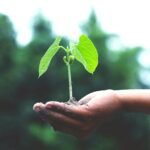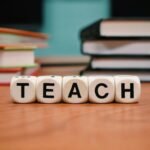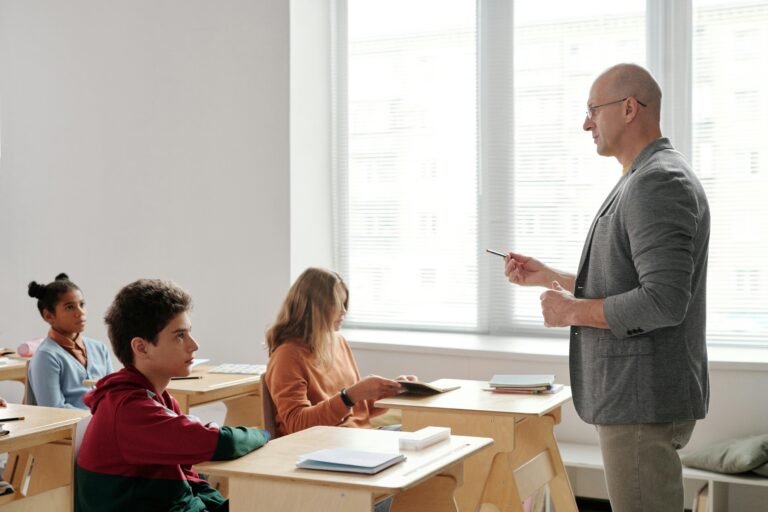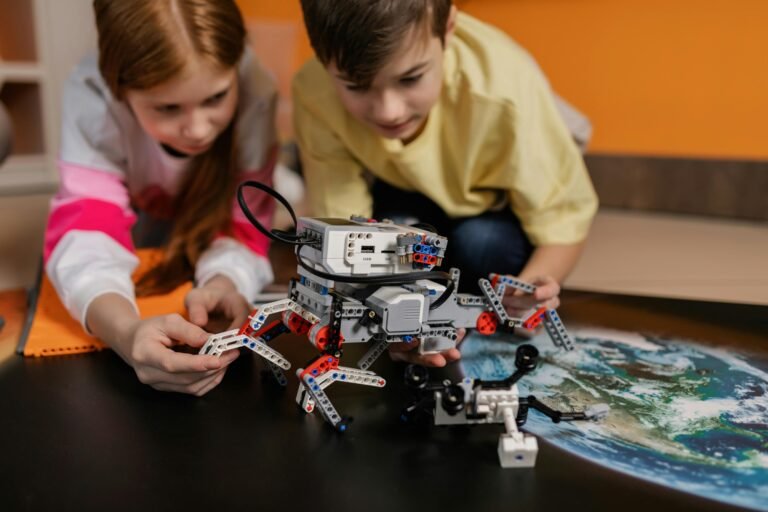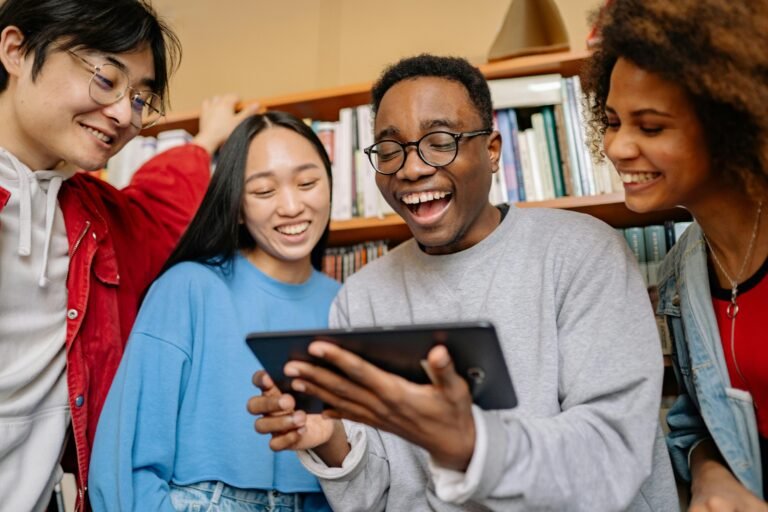Project-Based Learning (PBL) transforms middle school classrooms into vibrant learning communities. Instead of memorizing facts and finishing worksheets, students solve real‑world problems—or create meaningful products. This approach builds essential 21st‑century skills—collaboration, communication, creativity, and critical thinking—while nurturing autonomy, motivation, and a true sense of ownership over learning.
Below, you’ll find a well-rounded collection of PBL prompts by grade and subject—each featuring:
- A Driving Question to spark inquiry
- A Brief Project Description showing how students engage
- Possible Outcomes/Products they can showcase, present, or reflect on
These prompts can be used straight out of the box or adapted to fit your school’s context, student interests, or learning goals.
Project-Based Learning (PBL) for Middle School (Grades 6–8): Real-World Projects That Ignite Curiosity
Grade 6 Projects: Communicators, Creators & Scientists
Language Arts – Driving Question: How can we create and publish our own newsletters?
Description:
Students explore journalistic writing—captions, headlines, structure—and then choose a theme (school news, hobbies, or community events). They research their topic, cite credible sources, write and revise articles, and finally design either a print or digital newsletter to share with their peers.
Outcomes/Products:
- Student-written and edited newsletters
- Digital or printed publications
- Peer and reader feedback
Math – Driving Question: How can we create and sell our own board games?
Description:
Students design math-based board games weaving in fractions, decimals, percentages, probability, and statistics. They test gameplay, gather feedback, and refine mechanics. They also plan cost, price, and profit strategies, practicing real-world math.
Outcomes/Products:
- Student-created board games
- Feedback forms or surveys
- Cost and pricing analyses
- Marketing plans and profit reports
Science – Driving Question: How can we design and test a roller coaster?
Description:
Students learn physics concepts like motion, energy, and force. They research real roller coasters, plan a model using simulators or craft materials, test speeds, loops, or jumps, gather data, and refine designs based on results.
Outcomes/Products:
- Working roller coaster models
- Data tables and graphs detailing performance
- Design analysis reports
- Video demonstrations or presentations
Social Studies – Driving Question: How can we create a simulation of a civilization?
Description:
Students research ancient civilizations (Egypt, China, Greece, etc.), examining geography, government, religion, art, and daily life. They choose a format—model, map, board game, or multimedia—and build simulations rich in historical detail.
Outcomes/Products:
- Civilization simulations
- Annotated maps or models
- Multimedia presentations or videos
- Historical artifact displays
Grade 7 Projects: Puzzles, Processes & Problematizing
Math – Driving Question: How can we create and solve a mystery using math clues?
Description:
Students craft mysteries—treasure hunts, whodunits, or puzzles—solvable with algebra, geometry, or logic. They build clue sequences, test them with peers, and refine based on feedback, reinforcing reasoning and problem-solving.
Outcomes/Products:
- Written mysteries
- Math clues and puzzles
- Completed solution paths
- Peer feedback summaries
Math – Driving Question: How can we create and play a math escape room?
Description:
Inspired by real-life escape rooms, students design interactive, math-based challenge rooms. They build puzzles involving equations, geometry, and logic, test with classmates, and iterate to refine pacing and difficulty.
Outcomes/Products:
- Math escape room setups
- Puzzles and challenge sequences
- Feedback rubrics
- Completion reports and reflections
Science – Driving Question: How can we create and test a water filter?
Description:
Students investigate water purification, design filters using recycled materials, and test them on varied water samples (tap, pond, rainwater). They collect and compare metrics like clarity, pH, and turbidity to evaluate effectiveness.
Outcomes/Products:
- Handmade water filters
- Sample jars and test results
- Data tables and comparative charts
- Lab-style reports and presentations
Science – Driving Question: How can we create and launch a model rocket?
Description:
Students learn about propulsion, aerodynamics, and stability to build and launch log-scale rockets. They run simulations, track altitude, speed, and flight distance, and document results to inform subsequent rounds.
Outcomes/Products:
- Model rockets
- Launch data (charts, tables)
- Design improvement reports
- Launch videos and presentations
Grade 8 Projects: Applied Thinking & Engineering
Math – Driving Question: How can we create and use a math scavenger hunt?
Description:
Combining geometry, measurement, and logic, students design math-based scavenger hunts for peers. They craft clues, field-test tasks, revise based on feedback, and deploy their hunts in schools or communities.
Outcomes/Products:
- Scavenger hunt materials
- Completed participant reflections
- Rubric-based feedback forms
- Completion reports
Math – Driving Question: How can we create and break codes using math?
Description:
Students explore cryptography—substitution, transposition, Caesar, Vigenere ciphers—and craft their own codes. They exchange encrypted messages and challenge classmates to decode them, sharpening logic, pattern recognition, and persistence.
Outcomes/Products:
- Custom ciphers and messages
- Decoding work by peers
- Clue summaries and reflections
- Encryption process logs
Science – Driving Question: How can we create and test a solar oven?
Description:
Students study solar energy, heat reflection, insulation, and cooking science. They design ovens from recycled materials, test cooking efficiency, track temperature vs. time, and tweak for better performance.
Outcomes/Products:
- Homemade solar ovens
- Thermometer logs and data graphs
- Success/failure analysis
- Cooking demonstration videos
Science – Driving Question: How can we create and test a model bridge?
Description:
Students investigate bridge engineering—structure types like truss, beam, and suspension—and build small-scale, recycled-material bridges. They load test structures, measure failure points, and refine designs accordingly.
Outcomes/Products:
- Model bridges
- Load-testing data and force measurements
- Engineering analysis
- Presentations or demo videos
Why This Kind of PBL Works in Grades 6–8
Project-Based Learning is powerful during middle school because it meets students at a phase of cognitive, social, and emotional growth. This is when curiosity is strong, independence emerges, and abstraction becomes natural.
1. Amplifies Abstract Thinking
Students are ready to connect cause with effect, analyze data, and synthesize ideas—making PBL projects like creating solar ovens or roller coasters ideal for building deep understanding and complex reasoning.
2. Adds Real-World Relevance
At this age, students want to know why learning matters. PBL answers that question: they learn math to design profit-generating board games and use science to solve real challenges like clean water or sustainable energy.
3. Elevates Voice, Choice & Ownership
Middle schoolers crave autonomy. PBL gives them agency—they pick newsletter topics, choose bridge designs, or select pumpkin recipes. Ownership boosts motivation and builds executive skills.
4. Builds Collaboration & Social Skills
Students are learning how to navigate complex group work. PBL tasks—like building a water filter or hosting an escape room—develop teamwork skills, conflict resolution, and shared responsibility.
5. Supports Varied Learning Styles
Whether students are verbal, artistic, hands‑on, or analytical, PBL provides multiple entry points. Model-building, designing, writing, and presenting allow every learner to shine and feel valued.
Tips for Bringing These Projects to Life
-
Customize prompts to reflect local contexts—seasonal themes, neighborhood issues, school initiatives.
-
Gather inexpensive materials: recycled bits, craft supplies, repurposed items. You don’t need expensive resources.
-
Use visual scaffolds: posters or anchor charts to remind students of steps and objectives.
-
Pair vocational skills with reflection: sketching, counting, measuring, writing—valuable for all academic areas.
-
Create routines: Daily journal time, routine measurement periods.
-
Build in sharing: Presentations, classroom galleries, parent showcases, video snippets.
-
Encourage reflection: Ask simple prompts like “What worked well?” “What would you do differently?” “What surprised you?”
In Closing
Middle school PBL moves learning beyond the page—to a place where students are thinkers, doers, and creators. Through these hands-on projects, learners apply knowledge in authentic ways—making learning more relevant, engaging, and enduring.
By integrating PBL into your curriculum—whether you’re launching rockets, publishing newsletters, or decoding ciphers—you’re not just teaching content. You’re nurturing lifelong problem-solvers, communicators, and collaborators who understand how to approach real-world problems with curiosity, resilience, and heart.
Take your next step: Choose a prompt that excites your students, gather your materials, and get ready to teach by lighting that spark. Their learning—and confidence—will soar.
Related Posts
Inquiry-Based Learning: A Powerful Approach for K-12 Education
Project-Based Learning: A Student-Centered Approach for K-12 Education
Inquiry Based Learning vs Project Based Learning: What’s the Difference?
Terms Used in Curriculum and Instruction for K-12 schools



